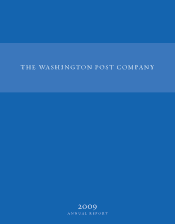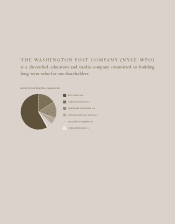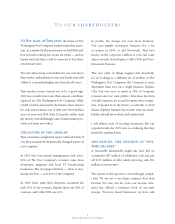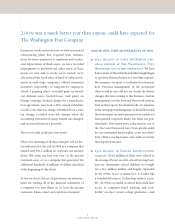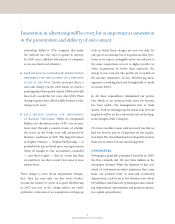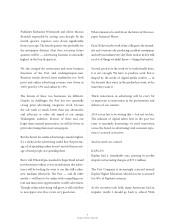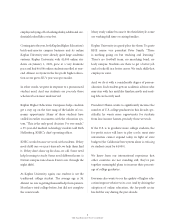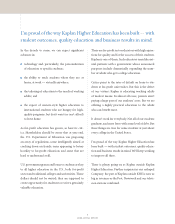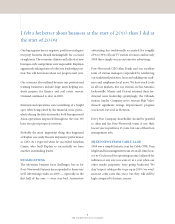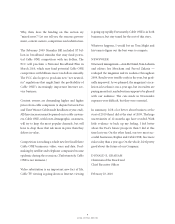Washington Post 2009 Annual Report Download - page 8
Download and view the complete annual report
Please find page 8 of the 2009 Washington Post annual report below. You can navigate through the pages in the report by either clicking on the pages listed below, or by using the keyword search tool below to find specific information within the annual report.
6
THE WASHINGTON POST COMPANY
Many study online because it fits their lifestyle; some
are working full time or raising families.
Kaplan University is a good place for them. To quote
KHE senior vice president Peter Smith: “There
is nothing going on but teaching and learning.”
There’s no football team, no marching band, no
leafy campus. Students are there to get a better job
and a foothold in a better career. We teach skills that
employers want.
And, we do it with a considerable degree of person-
alization. Each student gets an academic advisor who
may stay with her until she finishes; math and read-
ing labs are heavily used.
President Obama wants to significantly increase the
number of U.S. college graduates in this decade; spe-
cifically, he wants more opportunity for students
from low-income homes, precisely those we teach.
If the U.S. is to graduate more college students, the
for-profit sector will have to play a role; most state
universities cannot expand today in light of state
budgets (the California State system alone is reducing
its student count by 44,000).
We know from our international experience that
other countries are not standing still; they’ve put
together meaningful plans to increase their percent-
age of college graduates.
Everyone also wants to see the quality of higher edu-
cation improve relative to its cost. And by driving the
adoption of online education, the for-profit sector
has led the way during the past decade.
employers laying off or looking shaky, additional cre-
dentials looked like a wise bet.
Coming into the year, both Kaplan Higher Education’s
brick-and-mortar campus business and its online
Kaplan University were already quite large academic
systems. Kaplan University, with 41,000 online stu-
dents on January 1, 2009, grew at a very dramatic
pace and had 60,000 online students enrolled at year-
end. Almost everyone in the for-profit higher educa-
tion sector grew; KU’s year was spectacular.
In other words, we grew in response to a pronounced
student need. And our students are precisely those
who have been most underserved.
Kaplan Higher Education Campuses helps students
get a step up on the first rung of the ladder of eco-
nomic opportunity. Many of these students have
stalled in earlier encounters with the education sys-
tem. “This is the only good decision I’ve ever made,”
a 35-year-old medical technology student told Beth
Hollenberg, KHEC’s chief operating officer.
KHEC works because we work with students. If they
need child care or a part-time job, we help them find
it. If they don’t show up for class, we call. Some need
help learning to study. Some need different hours (a
Detroit campus runs classes from 6 a.m. through the
night shift).
At Kaplan University, again, our student is not the
traditional college student. The average age is 34.
Almost no one is getting financial help from parents.
Most have tried college before, but did not complete
the coursework.

